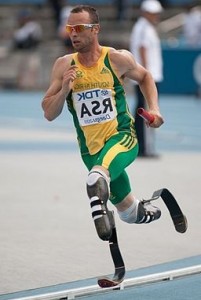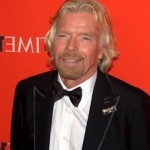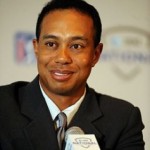 Describe the culture of your workplace.
Describe the culture of your workplace.
Can you even?
It’s not easy to pinpoint, since workplace culture typically comprises unconscious assumptions shared by the people involved.
Not easy, unless you’re sportswriter Michael Sokolove, who recently wrote about Oscar Pistorius, the top-ranked 400-meter runner and 2012 London Olympics hopeful.
Pistorius runs with extraordinary athletic ability, and uses prostheses called Flex-Foot Cheetas because he was born without the fibula bone in either of his legs. Sokolove wrote in The New York Times Magazine about the ways Pistorius is forging a new culture on the track field, and more generally in competitive athletics. Sokolove talked to a colleague about his experience following Pistorius. In the interview, he says:
In my mind, there is an image of an Olympic-level runner. He is a human thoroughbred, powerful and graceful, like Michael Johnson, the world-record holder in the 400 meters. Oscar is certainly powerful, and graceful in his own way, but I could not look at him and say: this is the highest order of the human form. You can’t. There’s something missing. So I had to adjust my mind and say: this is also a runner, possibly an Olympian, and regard him on his own terms.
Sokolove speaks for so many when he describes this mental image of an Olympic runner, which is laden with assumptions about gender, physical looks, age, as well as ability. These are some of the intangible components of the culture of competitive sports, which Pistorius continues to challenge.
How?
In 2008, the governing organization of track and field, known as the International Association of Athletics Federations (IAAF), forbade Pistorius from competing on the grounds that his prosthetic running blades gave him a competitive advantage. Pistorius assembled a team of crackerjack lawyers and appealed to the Court of Arbitration for Sport, which ultimately reversed the IAAF’s decision.
So he’s concretely challenged–and changed–the rules of engagement, and as he works to qualify for the London 2012 Olympics, he leaves the rest of us to adapt to his presence on the field among athletes with no prosthetic limbs. Sokolove explores the complexities of the issue in his interview:
Should the Olympics and other “able-bodied” competitions be open to amputees? The science, in simplest terms, attempts to compare the real-life Oscar with an imagined, able-bodied Oscar. How fast would he be with biological legs? But of course, no such person exists. If Oscar had legs, he would move differently, would have different physiology, would have a different mental outlook. Peter Weyand, one of the scientists I quote, believes Oscar can cycle his legs faster because the Cheetahs are far lighter than biological lower legs. But how do you weigh that against the disadvantage of having no muscles or feedback in his calves or feet?
Here’s what we’re learning from the South African athlete: to exist in an organization is to influence its culture.
We’ve worked with clients who see organizational culture as something outside of themselves, which Pistorius demonstrates is simply not true. Since you’re one component of the organization’s culture, the more you reveal your true self, the more honestly you affect it, and the more a part of it you become.
Oscar Pistorius’ performance on the field mirrors the way our own differences get exercised at work. Whether or not he qualifies for the London 2012 Olympics, he’s a champion for showing us how to make strides at work, in our own unique way.
Watch him reach the 400-meter semifinals at the 2011 World Championships in Daegu, South Korea:
Image via



